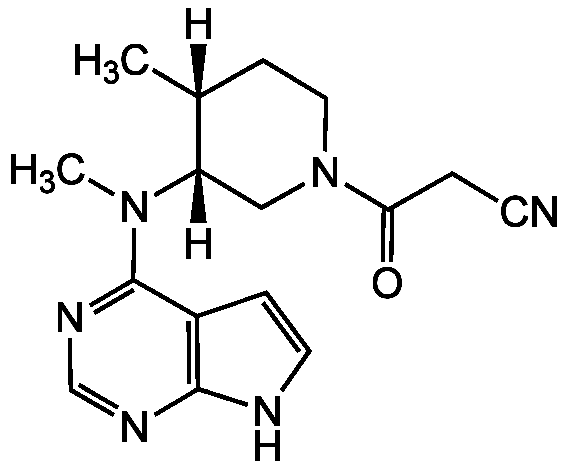
Chemical Structure
Tofacitinib
AG-CR1-3625
CAS Number477600-75-2
Product group Chemicals
Estimated Purity>98%
Molecular Weight312.4
Overview
- SupplierAdipoGen Life Sciences
- Product NameTofacitinib
- Delivery Days Customer10
- CAS Number477600-75-2
- CertificationResearch Use Only
- Estimated Purity>98%
- Hazard InformationDanger,Excepted quantity
- Molecular FormulaC16H20N6O
- Molecular Weight312.4
- Scientific DescriptionChemical. CAS: 477600-75-2. Formula: C16H20N6O. MW: 312.4. Potent cell permeable JAK3 inhibitor (IC50 = 1nM). Shows also JAK-1 inhibitory activity. Immunosuppressive and anti-inflammatory agent. Inhibits signaling through heterodimeric receptors associated with JAK3, JAK1, or both of them, with functional selectivity over JAK2-paired receptors. Blocks downstream STAT signaling, resulting in potent inhibition of several cytokines, including interleukins 2, 4, 7, 9, 15 and 21, which are integral to lymphocyte activation, function and proliferation. Investigated for several autoimmune disorders including, rheumatoid arthritis and psoriasis. Potent and selective inhibitor of HIV-1 replication and virus reactivation in vitro. - Potent cell permeable JAK3 inhibitor (IC50 = 1nM). Shows also JAK-1 inhibitory activity. Immunosuppressive and anti-inflammatory agent. Inhibits signaling through heterodimeric receptors associated with JAK3, JAK1, or both of them, with functional selectivity over JAK2-paired receptors. Blocks downstream STAT signaling, resulting in potent inhibition of several cytokines, including interleukins 2, 4, 7, 9, 15 and 21, which are integral to lymphocyte activation, function and proliferation. Investigated for several autoimmune disorders including, rheumatoid arthritis and psoriasis. Potent and selective inhibitor of HIV-1 replication and virus reactivation in vitro. It is investigated against the spread of the SARS-CoV-2 (COVID-19). PRK1 inhibitor.
- SMILES[H][C@@]1(C)CCN(C[C@]1([H])N(C)C1=NC=NC2=C1C=CN2)C(=O)CC#N
- Storage Instruction-20°C,2°C to 8°C
- UN NumberUN 2811
- UNSPSC12352200



![Tofacitinib [477600-75-2]](https://www.targetmol.com/group3/M00/35/14/CgoaEGayFJGEYsxKAAAAALwv29E398.png)
